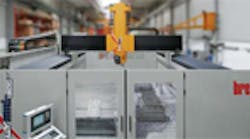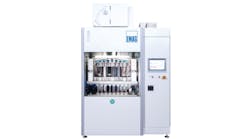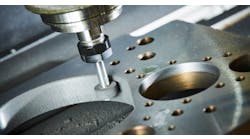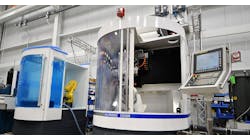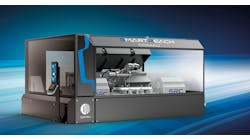Brenton’s Flymill machines are gaining ground in aerospace machining.
Breton S.p.A. has targeted its Flymill series of machines to compete directly with linear-motor machines, and the company said it has paid off.
Breton (www.breton.it) said its Flymill series has already gained the favor of several industry sectors, such as die manufacturing, design and styling, and aerospace precision engineering, because of the many machine configurations available to accommodate large workpieces.
The series consists of four models: Flymill 1000, 1300, 1600 and 2000 that basically differ in vertical travel and in transversal travels measuring 2,500 mm (98.43 in.), 4,000 mm (157.48 in.) and 3,500 mm (137.80 in.), while standard longitudinal travels vary between 2,000 (78.74 in.) and 8,000 mm (314.96 in.). Extensions are possible depending on application.
Large tables, rigid machine structures and ample working ranges give shops the option of machining single workpieces or batch jobs on a Flymill. The machines feed at 40 m/ min and rapid at 60 m/min.
Machine heads, all with C-axis continuous rotation, and easy programming procedures allow Flymills to perform complex machining operations rapidly by milling in three dimensions simultaneously. Also, 120-degree A-axis rotation makes machining complex undercuts possible without having to reposition workpieces.
The entire range of Flymill heads can be equipped with highperformance electrospindles for speeds to 40,000 rpm and continuous torque of 220 Nm. Special software compensates for thermal expansion of spindles and other errors that occur when machining conditions vary.
Wheel-type tool magazines provide room for as many as 30 tools with diameters of 140 mm (5.51 in.) and lengths of 300 mm (11.81 in.). There is also a rack-style magazine available for holding 100 or more tools.
